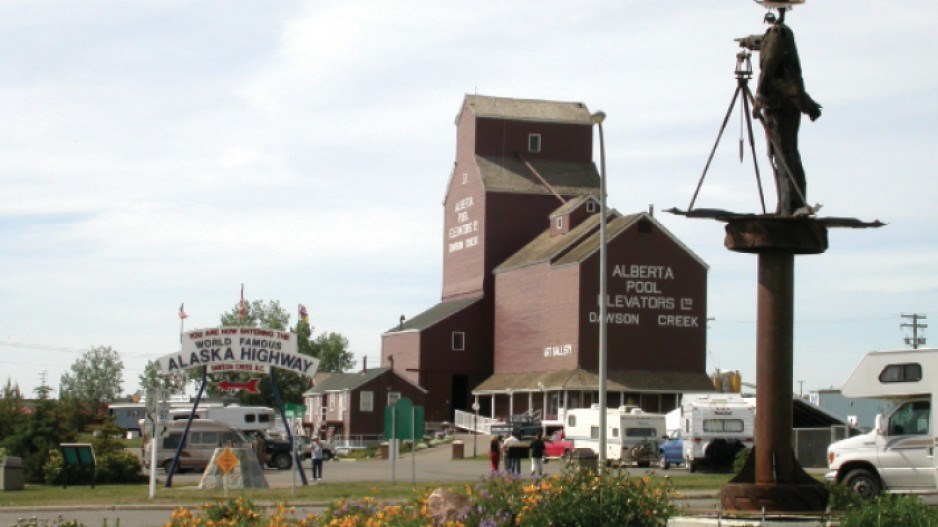It's a single word, but it can say a lot about a local economy: “vacancy.”
In Dawson Creek, heartland of B.C.'s natural gas fields, one doesn't expect to see vacancy signs flashing at the city's hotels and motels, especially during the winter.
That's when most of the drilling takes place in the fracking fields, and the Peace region of northeastern B.C. is booming. Yet last year, Dawson Creek's hotels and motels experienced a 40% drop in business, according to the Dawson Creek Chamber of Commerce.
“2013 was bad,” said Sam Mangalji, owner of Inn on the Creek. “It was the slowest winter I've seen for a long time.”
“There's still lots of activity here, so where are these people going?” asked Rudy Van Spronsen, a business owner and chamber of commerce director.
The answer is that they are going to industrial work camps, according to the chamber. Van Spronsen said it makes sense to put workers in camps when the gas fields they work in are far from the nearest town. But recently Dawson Creek has had a couple of them crop up within a 25-minute drive of the city limits.
Encana Corp. (TSX:ECA) also confirms it plans to build a new work camp within 40 kilometres of Dawson Creek. Later this year, it will house 500 to 600 workers, ramping up to 1,250 next year, and potentially peaking at 2,500.
“So 15% of our total population would be in a camp 40 kilometres away,” said Dawson Creek Mayor Dale Bumstead. “It's an enormous number and it's an enormous potential component of how it impacts the services we as a community have.”
The concern is that these large work camps pay no local taxes but put added pressure on services like policing and hospitals, and are increasingly becoming self-sufficient, which means they are sourcing fewer goods and services from local businesses.
“Camps are now putting cardlocks in, so they're not buying our fuel,” said Van Spronsen. “What's next? Are we going to see tire shops, then a convenience store? Suddenly you create these cities out there.”
In anticipation of an increased demand for housing due to the gas boom, businessman Doug Scott and his business partners invested in a new four-storey 64-unit rental apartment building in Dawson Creek, and had expected many of the tenants would be gas field workers. But now Scott worries that oil and gas companies will find it cheaper and more convenient to simply put them up in work camps.
He said it's tough to make a business case to continue building new homes in Dawson Creek when it is so easy for companies to get approved to put up what is tantamount to a new subdivision that pays no taxes.
“For me to go ahead and start digging and put in a development permit for another multi-family building, when there's a 2,000-man work camp on the horizon, I don't think so. I'm going to wait and see.”
Encana spokesman Doug McIntyre said that while approximately 100 Encana workers already live in the Dawson Creek area, the company needs to build a work camp because Dawson Creek can't absorb all the workers it plans to bring in.
It's not just the loss of business that Dawson Creek worries about, however. There are also concerns over a “shadow population” of temporary workers straining local services, especially hospitals.
Officially, the Peace River Regional District has a population of 66,167. But there are an estimated 1,636 work camps in the region, according to Northern Health, the region's health district. The Site C dam, if approved, would add two large camps with up to 2,000 workers.
“Due to the volume of camps and the number of anticipated new industrial projects in the coming years, there is a sense of urgency to address health-related impacts of industrial camps,” a recent Northern Health report states.
One of the problems with industrial work camps is that their permitting is not co-ordinated with local governments. While the regional district has some say in camps approved for private property, it has no say over camps approved on Crown land.
At its recent annual general meeting, the BC Chamber of Commerce supported the Dawson Creek chamber's resolution to lobby the B.C. government for a centralized registry and new regulations for industrial work camps that would address some of the concerns of businesses and local government.
“This underground economy works outside of the approvals, regulations, inspections and taxation requirements and not only put[s] the health and safety of their residents at risk, but also environmental risks due to improper sewage, water and disposal systems,” the chamber states in its resolutions document.




